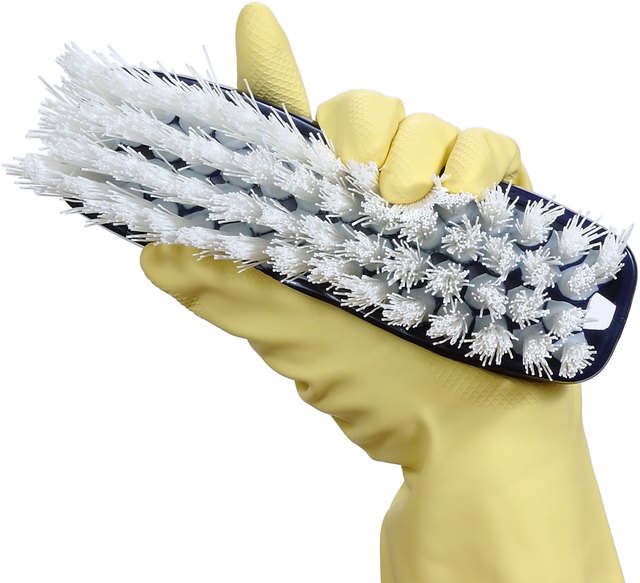White mold, a type of fungus often found under homes, is a culprit in potential health risks and structural damage. It thrives in damp and dark environments, often concealed underneath the structure of your home. Alarmingly, exposure to white mold spores can lead to respiratory problems, allergic reactions, and even more severe health concerns. Additionally, it can compromise the structural integrity of your house, eventually resulting in costly repairs. It’s essential to address white mold promptly and effectively to safeguard your health and your home’s integrity. Here’s a step-by-step guide to help you combat this hidden enemy:

Image: www.hunker.com
Step 1: Locate and Identify the Mold
White mold typically manifests as fuzzy white or gray patches. It prefers to colonize on surfaces such as drywall, wood, and insulation. To locate the mold, inspect areas prone to moisture, like bathrooms, basements, and crawl spaces. If you suspect mold growth, wear a mask and gloves for protection, as spores can irritate your respiratory system.
Step 2: Determine the Underlying Cause
Addressing the source of moisture accumulation is crucial to prevent mold recurrence. Common causes include water leaks, condensation, flooding, or poor ventilation. Thoroughly investigate areas with visible mold to identify the culprit. This step is essential for both mold removal and preventing its return.
Step 3: Protect Yourself and Your Home
Mold can cause adverse health effects, so protective measures are crucial. Wear a respirator, gloves, and eye goggles to minimize exposure to spores. Additionally, isolate the affected area from the rest of your home to prevent spores from spreading.

Image: www.pinterest.com
Step 4: Remove the Mold
Depending on the severity of the infestation, you may choose between different mold removal methods:
For Small Areas: Use a bleach solution (1 part bleach to 10 parts water). Apply with a spray bottle or sponge. Allow the solution to sit for 15 minutes, then wipe the mold away.
For Larger Areas: Rent a commercial-grade mold fogger or call in a professional mold remediation company.
Step 5: Dry the Area Thoroughly
Once the mold is removed, use fans and dehumidifiers to dry the area thoroughly. Adequate ventilation is essential to prevent moisture buildup and subsequent mold growth. High-powered fans can speed up the drying process.
Step 6: Inspect Regularly and Monitor
After the initial cleanup, regularly inspect areas where mold was present to ensure it has not returned. Fix any water leaks or moisture-related issues to prevent recurrence. Keep the area dry and well-ventilated.
How To Get Rid Of White Mold Under House
Conclusion
White mold under a house can be a serious problem, posing health risks and potentially damaging your home’s structure. By following these steps, you can effectively eliminate white mold, safeguard your health, and protect the integrity of your home. Remember, preventing mold growth is crucial, so addressing moisture problems and maintaining proper ventilation are fundamental to a mold-free environment.